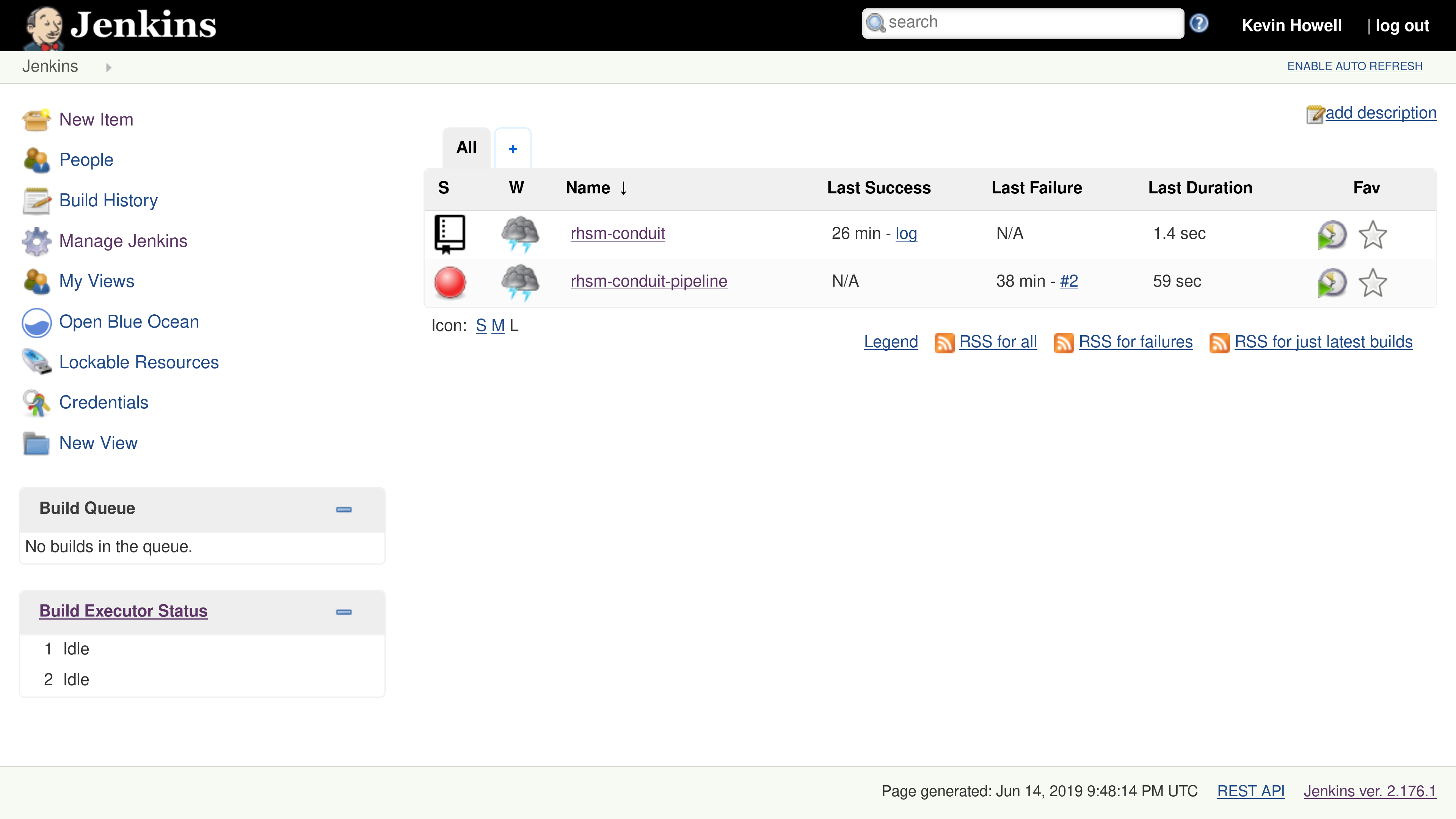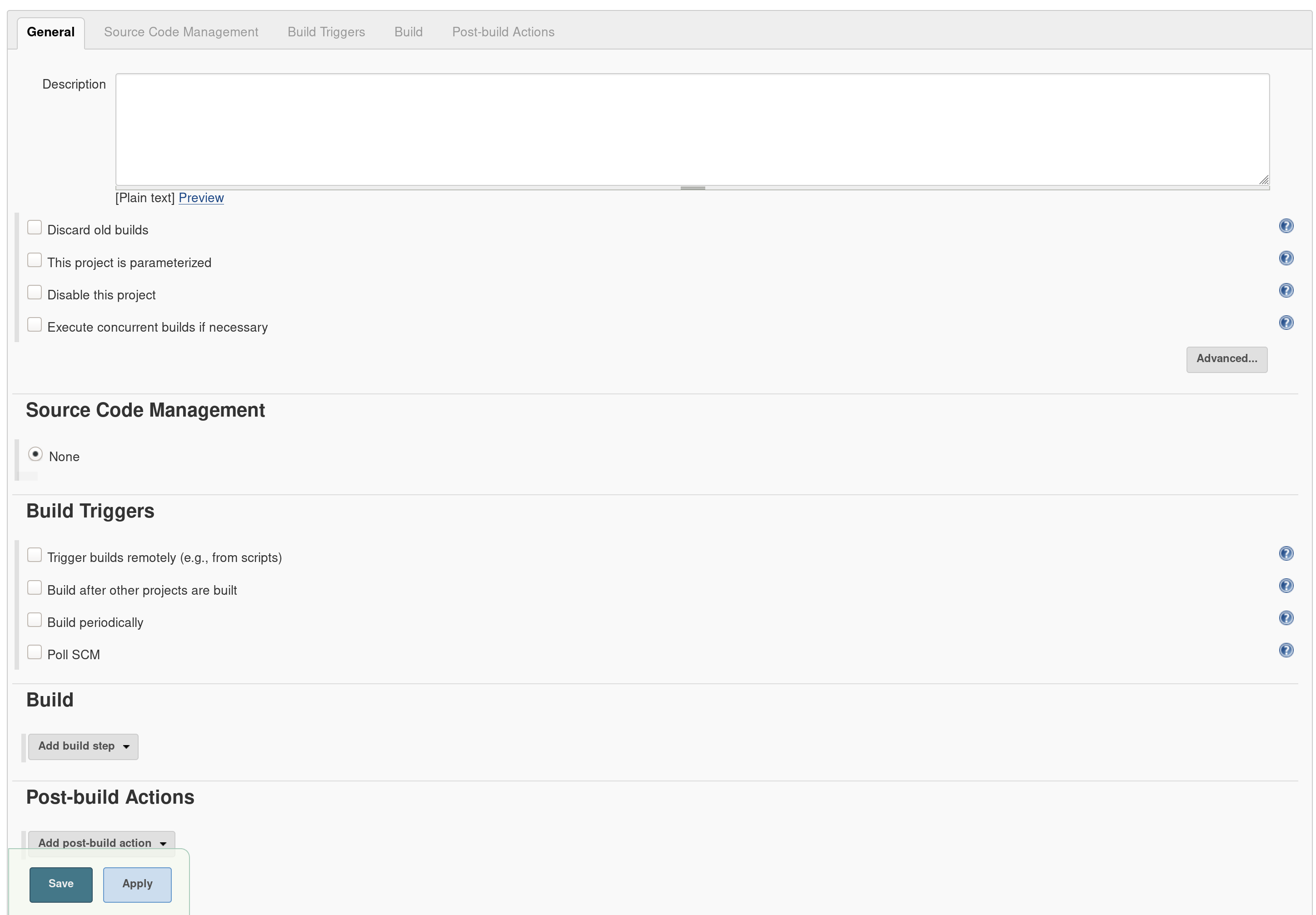Jenkins 101 - Goals¶
Gain a basic understanding of Jenkins¶
Learn how to install & manage Jenkins¶
Learn some Jenkins best practices¶
Jenkins 101 - About Me¶
khowell@redhat.com (or kevin@kahowell.net)¶
https://github.com/kahowell¶
https://kahowell.net¶
Red Hat Certified Architect¶
Senior Software Engineer & tech lead for Candlepin & subscription-manager team at Red Hat (Satellite 6)¶

Jenkins 101 - What is Jenkins?¶
Jenkins is a widely used open source automation server¶
Indicated, common use is to use Jenkins to build and test software¶
Jenkins can be used as a general purpose tool for centrally executing tasks¶
Jenkins functionality is provided by a community of plugins¶
Jenkins 101 - The Server¶
The Jenkins server can run anywhere that Java runs.
Jenkins creates packages for many platforms:
- Linux
- RHEL, Centos, Fedora
- OpenSUSE
- Ubuntu, Debian
- Container Image
- Windows
- macOS
Jenkins 101 - Installation¶
Use your favorite package manager (https://jenkins.io has packages for nearly everything).¶
Run a VM image¶
Run a container image¶
Jenkins 101 - Server Interface¶
The primary way to interact with the server is through its Web interface, e.g. http://localhost:8080.

Jenkins 101 - Jenkins Nodes¶
It's best practice in Jenkins to use systems other than the server in order to execute tasks.
Security¶
Stability¶
Isolation¶
Cross-platform automation¶
Jenkins 101 - Freestyle Jobs¶
The original method of defining execution via Jenkins is the Job.
Jobs are broken up into several components:
Job configuration (e.g. git configuration, parameters)¶
Triggers¶
Build Actions¶
Post-Build Actions (e.g. send email)¶
Jenkins 101 - Freestyle Job Example - Job DSL¶
job("$baseFolder/vagrant-upstream-images") {
description('builds centos, fedora, etc. vagrant images for subman development')
label('rhsm-packer')
scm {
github('candlepin/packer', 'master')
}
wrappers {
colorizeOutput()
credentialsBinding {
string('VAGRANT_CLOUD_TOKEN', 'VAGRANT_CLOUD_TOKEN')
}
}
steps {
shell(readFileFromWorkspace('src/resources/subman-vagrant-images.sh'))
}
}
Jenkins 101 - Pipelines¶
The preferred, modern way of automating with Jenkins is by implementing Jenkins pipelines.

It was once common practice to create software pipelines by chaining Jenkins jobs together, but now pipelines are a first-class concept in Jenkins.
Jenkins 101 - Example Pipeline¶
pipeline {
options { buildDiscarder(logRotator(numToKeepStr: '50')) }
agent {
label 'rhsm'
}
stages {
stage('Clean') {
steps {
sh './gradlew --no-daemon clean'
}
}
stage('Build') {
steps {
sh './gradlew --no-daemon assemble'
}
}
/* more stages omitted */
}
post {
always {
archiveArtifacts artifacts: 'build/reports/checkstyle/*.html'
junit 'build/test-results/**/*.xml'
}
}
}
Jenkins 101 - Pipeline Advice¶
Jenkinsfile, optional, but recommended¶
Use the "declarative" syntax when possible¶
Use script files (.sh, .py)¶
Jenkins 101 - Jenkins as a Central Script Runner¶
Centralized way to run scripts¶
Empower people to use root powers, without giving them root.¶
Share output with colleagues easily¶
Keep a history of who and what¶
Unit tests¶
End-to-end tests¶
Static analysis¶
PRs or long-lived branches (e.g. master)¶
Jenkins 101 - Jenkins for Continous Delivery¶
Use Jenkins to automate building and releasing your products:
Automate builds on various platforms¶
Automate delivery to a CDN¶
Automate deployment of a service¶
Jenkins 101 - Recap¶
- Jenkins can be used for lots of kinds of automation
- Plugins can be installed to provide additional functionality
- Jenkins nodes allow you automate various platforms and isolate your automation
- Pipelines should be used for new automation
Jenkins 101 - Resources¶
- Jenkins: https://jenkins.io
- Jenkins Job DSL: https://github.com/jenkinsci/job-dsl-plugin
- Job DSL Examples: https://github.com/sheehan/job-dsl-gradle-example
- Real-World Jenkins Job Examples: https://github.com/candlepin/candlepin-jobs
- Jenkins Pipeline Reference: https://jenkins.io/doc/pipeline/steps/
- Jenkins Pipeline Examples: https://github.com/jenkinsci/pipeline-examples
- Real-World Jenkins Pipeline Example: https://github.com/RedHatInsights/rhsm-conduit/blob/master/Jenkinsfile
Jenkins 101 - Q&A & Thank You!¶
Thanks for attending! Questions?

